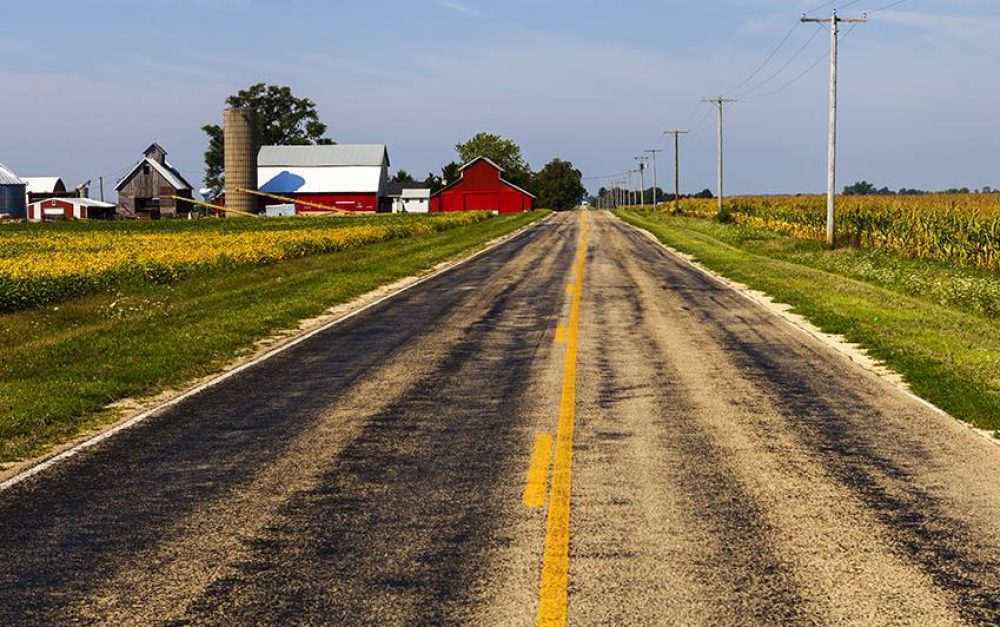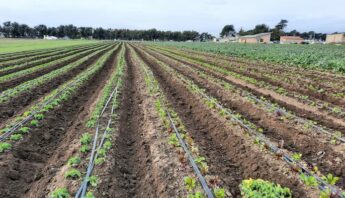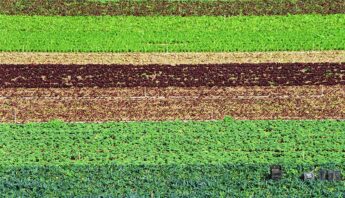I went home to Iowa back in July, and many fields were still bare from last fall’s post-harvest tilling. Normally, field corn would have been at least knee high. Though the saying goes “knee high by the fourth of July…”, Iowans know that field corn is often head high — or taller — by the 4th. And I’m 6’ 2”!
I went home to Iowa back in July, and many fields were still bare from last fall’s post-harvest tilling. Normally, field corn would have been at least knee high. Though the saying goes “…knee high by the fourth of July!” Iowans know that field corn is often head high (or taller!) by the 4th. And I’m 6’ 2”!
But this year, a wet spring, flooding, and torrential summer downpours have delayed farmers’ work in the fields. Planting has been late, and in some cases, hasn’t happened at all. This spring’s flooding corresponds with scientists’ models of climate change in the region. We know we’re in the midst of a climate crisis. But thankfully, we also know there’s something we can do about it. Farmers are calling for parity pricing, which refers to federal policies that establish a relationship between farm commodity prices and farmers’ costs of production, ensuring farmers are fairly compensated for their products — like a minimum wage for farmers. But what does parity pricing have to do with the climate crisis?1
The case for parity pricing
Federal food and farm policy determines much about what we eat, how it’s grown, and its impact on the environment. From food access and nutrition programs, to crop insurance and agricultural research, federal farm policy touches many aspects of our agricultural economy — which accounts for more climate change-contributing emissions than the world’s cars, trucks, planes, and trains combined. Thus, food and ag policy can help end the climate crisis — or exacerbate it.
The climate crisis is one reason farmers are calling for a shift in federal food and farm policy. But as if the climate crisis wasn’t bad enough, under current policy, farm incomes are in free fall. U.S. farmers and ranchers have experienced a near 50 percent drop in net farm income since 2013, the largest drop since the Great Depression. Meanwhile, agricultural communities are facing an onslaught of pesticide drift as crop varieties are engineered to withstand the application of herbicides such as glyphosate and dicamba.
This is all part of our global chemical-intensive agriculture system. Farmers are facing an economic crisis not because they don’t work hard enough to make ends meet; in fact, globally, farmers produce 1.5 times more food than what’s needed to feed the Earth’s population.
Instead, we are facing an agricultural economic crisis in part because current U.S. food and farm policy leaves farmers with few options to make ends meet other than to produce more. As the market saturates, agricultural commodity prices drop, often below what it costs to produce the commodity, dropping farm incomes. This benefits the seed and chemical companies who make money when farmers buy more chemical inputs in an effort to produce more crops in order to make ends meet as profit margins slim. But it doesn’t benefit farmers as prices are driven down further, farm incomes lessen, and the cycle continues. Meanwhile, profits leave farms and rural communities and collect in seed, chemical, and other corporate boardrooms instead, and our climate crisis is exacerbated as synthetic nitrogen fertilizer and pesticide use is on the rise. Farmer and friend Patti Naylor describes how current food and farm policy perpetuates this cycle:
“In reality, what some Farm Bill programs do is subsidize risk. These subsidies stop a disaster from shaking the whole food and farming system, but do little to keep individual farmers from going out of business during extended periods of low prices for their products.
“For example, if Iowa had a widespread drought and a lot of farmers lost their crops, they wouldn’t all go out of business because of their ‘safety net’ through Farm Bill programs. When individual farms are no longer viable, the land will be consolidated into surrounding farms with corn and soybeans continuing to be produced. These surviving farms still face slim profit margins as cheap grain prices continue through market-wide and global overproduction. The risk management programs that protect corn and soybean commodity crops bolster a flawed system that remains unchanged, while farmers, workers and communities suffer.”
The nitty-gritty
To address these challenges (and others!), many farmers, such as our friends at National Family Farm Coalition (NFFC), are calling for parity pricing — or food and farm policies that ensure the price farmers receive for their goods fairly accounts for the costs of production. Simply put, in a parity-based system of food and ag policy, policies would ensure farmers are equitably compensated for the cost of production, including the cost of practices that work with ecosystems, freeing up farmers to make decisions on the land that are best for their communities, environments, and economies.
There are several specific kinds of policy proposals that fall under the parity umbrella, including price floors and supply management.2 Price floors include national and international agreements to establish a floor, or minimum price, on agricultural commodities. This guarantees that farmers receive a fair price for their products, while accounting for the costs associated with producing the product, indexed to inflation.
Supply management, a complementary proposal, establishes production guidelines to prevent overproduction and the cycle of low farmgate prices, while establishing a grain reserve for excess harvest in good years. In a poor harvest year — expected more frequently under a changing climate — excess grain would be released from the reserve, keeping income fair for farmers and prices at the grocery store stable for consumers.
Parity pricing for the future
The fact is, for decades people across the U.S. have been calling for just food and agriculture systems that work with and for our environments and communities. From Indigenous communities advocating for land and tribal sovereignty to protect traditional agricultural practices, to farmworkers in Bellingham, Washington forming a worker-owned sustainable berry farm cooperative, to family farmers calling for parity pricing and supply management to enable farmers to make a living wage — many solutions are right in front of us. Parity pricing is one of them, and it isn’t a new or untested concept; many of today’s parity-related proposals mirror policies established in the U.S.’s first Farm Bill in 1933.2
As conversations around elections 2020 and newsworthy proposals such as the Green New Deal heat up, we will continue to lift up and prioritize the concrete solutions proposed by and working for those most impacted by chemical-intensive agriculture. We’re thrilled to see engagement with these ideas by candidates and thought leaders alike. After all, all of our futures depend on it.
1 I’d like to thank Patti Naylor and George Naylor for their expert analysis and insight on parity pricing and farm justice over the years, including many formal and informal conversations that have informed my analysis.
2 E Holt-Giménez, A Foodie’s Guide to Capitalism: Understanding the Political Economy of What We Eat (New York: Monthly Review Press/Food First Books, 2017).







